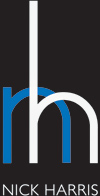For the first time in over a decade there will be a new rider and manufacturer occupying the top spot of the MotoGP™ podium at the Sachsenring on Sunday. Honda arrive in Germany with little chance of victory at a circuit where they have totally dominated the MotoGP™ race for the last 11 years. Marc Marquez has won the last eight German Grands Prix. Before that Dani Pedrosa won three in a row. Marquez will not be there on Sunday to make it nine, side-lined with injury for the rest of the season. It is tough times for the Japanese factory who have dominated Grand Prix racing for six decades. A staggering 812 wins including 312 in the premier class. This season Honda have just one third MotoGP™ place to their name thanks to Pol Espargaro at the opening round in Qatar. They will return to that top step because they have been here before. The late Soichiro Honda would expect and demand nothing less
Sixty-eight years ago, to the day a certain Soichiro Honda arrived unheralded on the Isle of Man to watch the 125cc TT race. He returned home with the promise he would return one day to take on and beat the world. It was a promise that he never broke. It is that promise that forms the very foundations of Honda racing and it has never been forgotten or forsaken.
Two things shocked him on that first visit to the Isle of Man. The speed and engineering prowess of the European manufacturers, and especially the German NSU 125 and 250cc superbly build bikes that were dominating the World Championships. The second shock was the anti-Japanese feeling of the British people, despite the fact that it was nine years since World War two had ended. He returned home to Japan with a suitcase full of chains, carburettors, and tyres ready to start the journey. It was five years before he returned to the Isle of Man ready to take on the world.
A year later, Honda started competing at the Mount Asama Volcano Race, located in a village at the foot of an active volcano on the island of Honshu in Japan. The track surface round the 18 kms circuit was compressed volcanic ash. Their main competition came from Yamaha and Suzuki. A decade later they were fighting each other for World titles. Mr Honda finally returned to the Isle of Man in 1959. This time no suitcase and notebook but with a team to compete in the World Championship. It was the opening round of the 125cc World Championship, ten laps around the shortened 17.365 kms Clypse TT circuit. Three Japanese riders who had never competed a full race on a tarmac surface and American Bill Hunt who was also the liaison officer for the team. The Team Manager was Kiyoshi Kawashima, who later became President of the Honda Motor Company. Their RC 142 Honda machines featured a bevel-drive DOHC twin with four valve heads. They may have been down on top speed to their Italian and East German counterparts. The riders lacked experience on the track surface, but both typically were reliable and never gave up. The result was the Team Prize including a sixth place for Japanese rider Naomi Taniguchi. Honda had arrived and the World had to take notice.
Two years later the first of those 812 wins came when Australian Tom Phillis won the 1961 125cc Spanish Grand Prix at Montjuic circuit in Barcelona. Honda were up and running. At Hockenheim Kanematsu Takahashi became the first Japanese rider to win a Grand Prix with a 250cc victory. Mike Hailwood clinched Honda’s first World title at the penultimate round of the 1961 250cc Championship with victory at Kristianstad in Sweden. It was his first World title and the first Japanese machine to take a World title.
Nowhere more than the Sachsenring illustrates just what a task lies ahead for Honda. Hopefully, their inspirational leader Marquez will return to the fight next season. It is a massive ask for both parties. Both are very capable of meeting the considerable challenge that lies ahead because winning is in the blood of Honda and those promises given by Soichro Honda 68 years ago have never been forgotten. He would expect nothing less.

